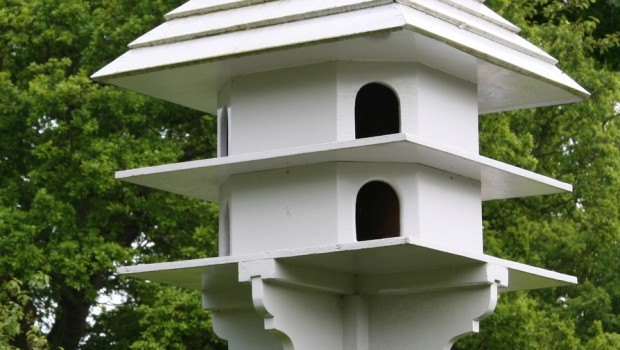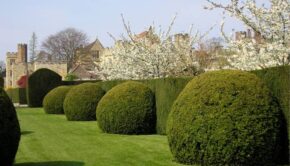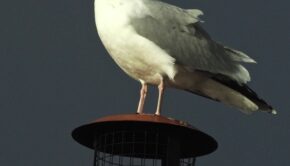The Pigeon and its Persecutors
By Sarah Hamilton
Gentle non aggressive and graceful these clever, talented birds are well known to most of us.
As habitats of all wildlife become increasingly threatened and challenged by excessive building demands, given its close association with man throughout history it is time perhaps to reflect on this this particular species and acknowledge its contribution to our lives.
As areas become more urban and wildlife is displaced in its struggle to survive, pigeons may try to become even closer to us. Because of their ability to adapt we may see many more and they will be regarded as a nuisance with risk of being destroyed
Man has had a close relationship with pigeons and doves throughout the centuries. They are generally regarded to be from the same group or family albeit doves tend to be smaller. The earliest history of the pigeon dates back to remote times when man worshipped a mother goddess with links to the bird. The term pigeon is derived for the Latin ‘pipio’ which really means young cheeping bird and dove is of Norse origin. There are 350 recorded varieties found in Europe North Africa and Asia
Pigeons are now used to living closely with man but originally were found living on the face of cliffs along with gulls where their main predators were peregrine falcons
In sharp contrast to the caring attitude of a Town Council when a little collared dove nested in its Christmas tree (Paddock Wood 2015), pigeons are regarded as a civic nuisance in many areas.
Racing Pigeons
This activity is thought to have first become popular in Belgium during the 19th Century and there is still a strong following today. The ability and stamina of pigeons to fly long distances and also return to where they are fed are qualities exploited for the sport.
Baskets of pigeons were a familiar sight on the platforms of many railway stations. Paddock Wood was one example and birds were sometimes released from the end of the platform. During the early days, often birds were sent to locations in cramped conditions which affected their performance. Things did improve as the sport grew in popularity and handlers would travel with their birds to attend to their needs. In the early 20th century, the London and North Eastern Railway ran special trucks or vans to deal with the large numbers.
Leisure time and feeding
Many will still remember the joy of feeding pigeons in Trafalgar Square or the timeless tale of Mary Poppins and the enduring image of the bird lady on the steps of St Paul’s Cathedral.
Countless generations enjoyed bird feeding which has arguably contributed to the enjoyment and wellbeing of many people, particularly children. One appraisal of a pigeon free Trafalgar Square in modern times is of a somewhat sterile concrete area with less warmth and appeal of former days. Indeed it has the positive buzz of urban life, but it could be said that something of the area has died.
When humans feed certain wildlife constantly it creates a big problem. Overpopulation is encouraged which is usually of detriment to those it is intended to help. The balance of nature generally manages all this when humans do not interfere. Overcrowding is bad for birds and wildlife as well as people. That said, there is no evidence that pigeons cause human disease.
Pigeons are of course part of large cities. They are opportunist residents which reside in places like railway stations and under bridges across the world. To a pigeon these areas are reminiscent of the cliffs occupied by their ancestors. Sadly in some urban areas today an all too often sight is of drowsy and sickly and dying birds the victims of poisonous human interventions in an attempt to control numbers.
The ‘feral bird’ as it is known, by those who disapprove of sharing their environment, shows sentience, or consciousness similar to that of humans. In 2012 The Universal Declaration of Animal Consciousness was signed by eminent scientists at the Francis Crick Memorial Conference in Cambridge. These birds, along with others were found to master tests of awareness such as discriminating between objects and recognizing themselves in mirrors.
The white version of the pigeon, often referred to as a dove, is recognized as an emblem for peace which again dates from ancient times. The symbol is used today for many kinds of promotional material
The War Heroes
These beautiful birds have been used as messengers during peace and war as early as Greek and Roman times. During both recent world wars the British intelligence service they were used to keep contact with resistance movements in occupied territory. During the Second World War pigeons were used extensively for carrying messages by the Army, RAF and Civil Defence services. They were carried ‘on board’ so that where problems occurred they could fly back to base with news.
Gustave, a notable bird who was the subject of a newsreel carried the first dispatch about D Day back to Reuters and another known as Duke of Normandy brought the first message back on the same topic from British airborne forces.
During WW1 a pigeon was sent from Dunkirk RAF Station on active patrols. On one occasion a bird was nearly drowned when a plane crashed. The pilot dried it as best he could and the pigeon was able to reach Dunkirk. Help was sent and all the crew saved. On a less happy note another squadron were killed and the only survivor was a pigeon who returned with a blood stained message ‘Attacked’.
The value of a Dovecote
Pigeons reside in many derelict sites such as the deserted cinema in Tunbridge Wells before it was recently demolished. For many they are been regarded as a nuisance. A particularly distressing event occurred when two piles of massacred birds were found in Pembury Woods. Poignantly, the area is an RSPB nature reserve. From research it is interesting to note that killing adult birds is not the answer to over-population and serves little other than to benefit those who kill for pleasure and money.
With no direct reference to a well-known public hostelry in the vicinity of Capel (which does happen to serve very nice beer), properly constructed dovecotes can serve as a valuable means to help control population by removing eggs. Historically they were of course used as a source of producing pigeons for food which hopefully is no longer in fashion.
Natural predators like crows, magpies and raptors tend to take eggs and young in the wild and that is how population balance is maintained in the natural world. Without predators, 90% of young birds are quoted as potentially dying from starvation. Therefore killing adult birds frees and rejuvenates the younger generations and when populations fail to decline man is left wondering why. It would be understandable if those who make a living from ‘pest control by killing’ would choose to ignore this however.
In 1999 Nottingham Hospital demonstrated the effect of removing eggs by having nest boxes built on heavily populated flat roofs. Birds were encouraged to roost and there were regular inspections by a pest control officer who removed eggs but left any hatched young. The impact was dramatic and in less than a year the population was reported as reduced by 50%.
Local authorities across the country have explored a similar approach. More information about this can be found at pigeon control resource centre.org
Deterrents, artificial nesting sites from which eggs are removed (ABFs), and public education is the real and effective answer to control pigeon populations.
References available





Comments